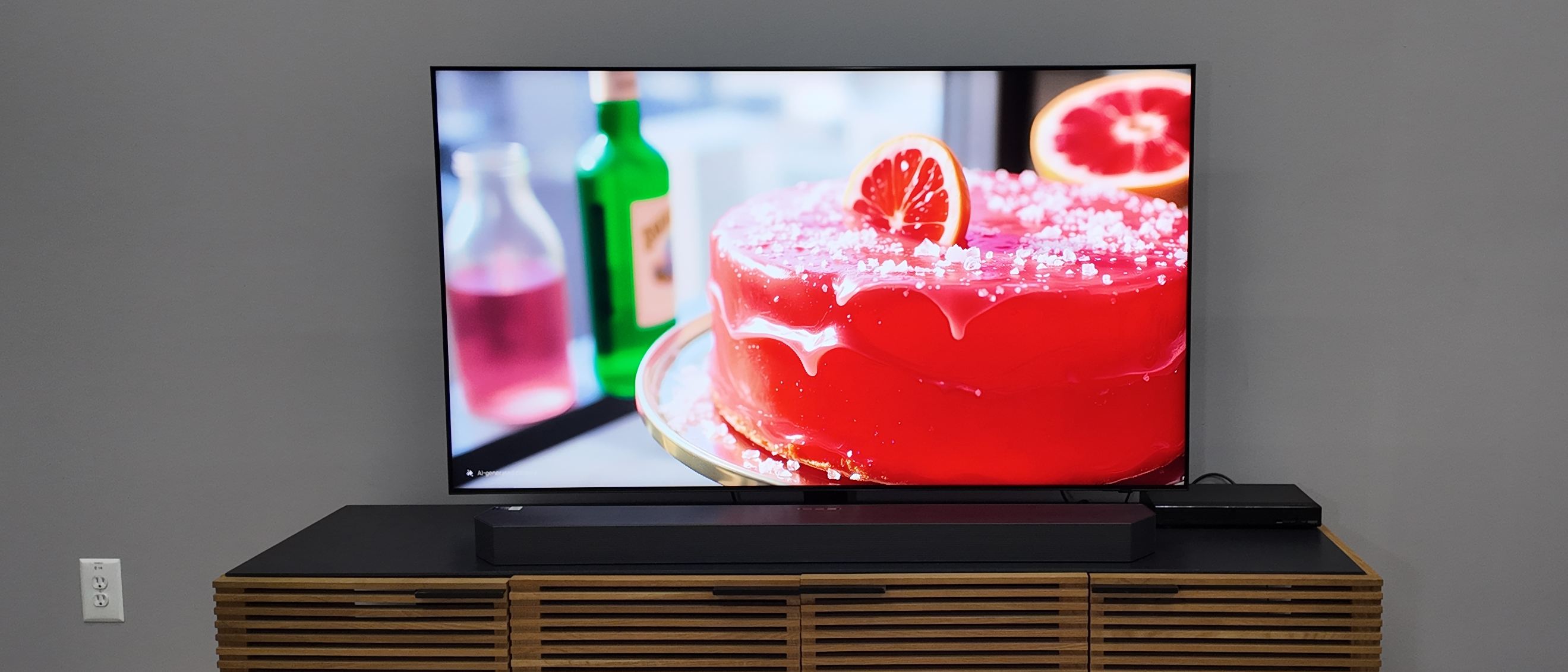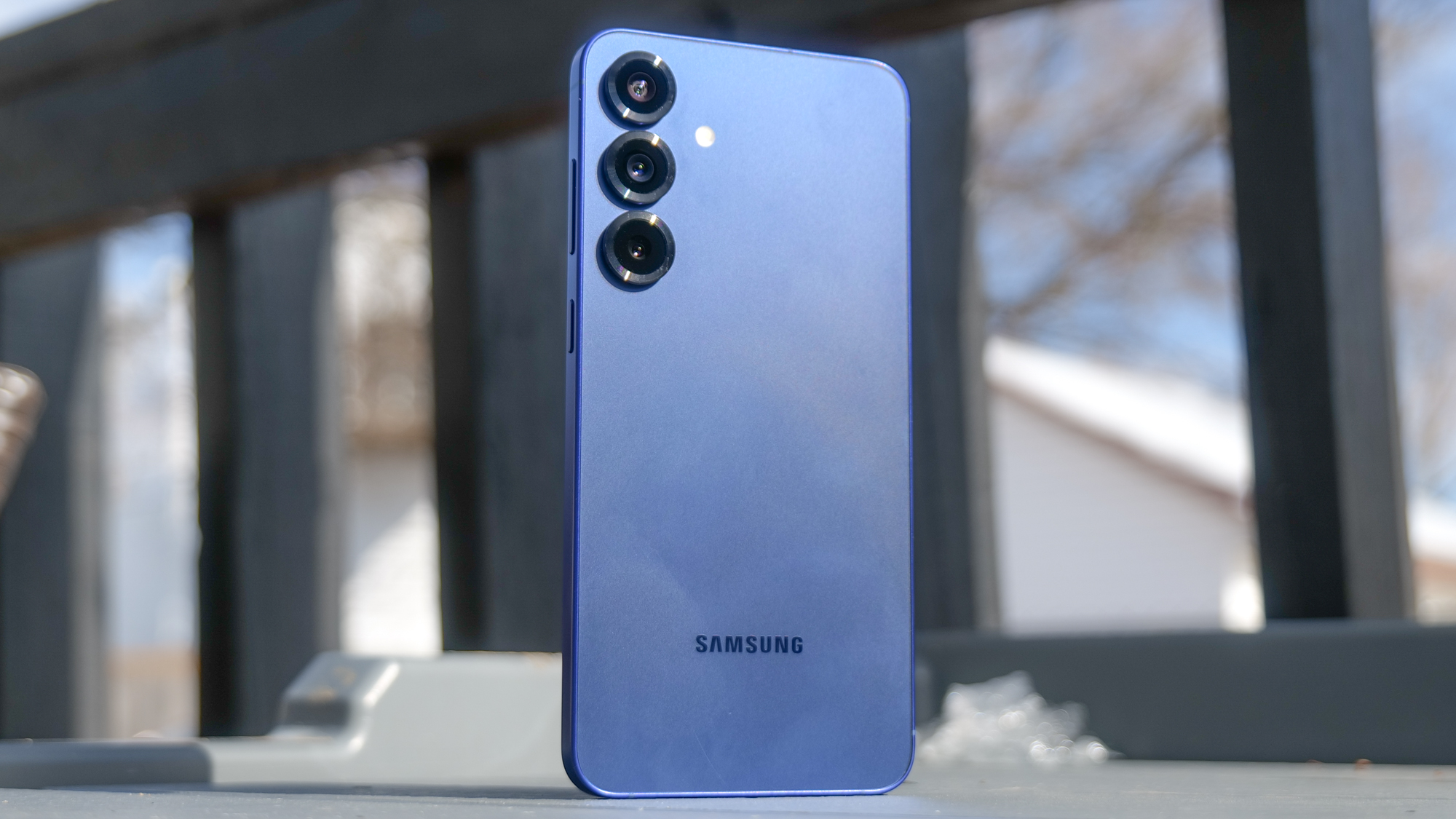Early Verdict
Samsung's 4K Mini-LED flagship for 2025, the Samsung QN90F Neo QLED, is shaping up to be one of the best LED TVs of the year. We're not sold on its highly advertised AI-based features, but from a performance standpoint, the QN90F is a stunner.
Pros
- +
Bright picture with impressive local dimming
- +
Full HDMI 2.1 support
- +
Elegant design
Cons
- -
Half-baked AI features
- -
Lackluster color volume
Why you can trust Tom's Guide
For several years, Samsung’s flagship Neo QLEDs have earned their place among the best 4K Mini-LED TVs money can buy. In 2025, the Samsung QN90F is tasked with taking on the mantle.
With a 55-inch version priced at $1,999 and a 65-inch model going for $2,699, the QN90F is right in line with what we've come to expect from flagship 4K models across the industry. However, it justifies its place in Samsung's lineup with terrific picture quality and a long list of features for gaming and beyond.
I recently spent several hours with the QN90F and familiarized myself with its place in the 2025 Samsung TV lineup. And, while there’s still some evaluating to be done in the coming weeks, it’s shaping up to be one of the best TVs of the year.
Samsung QN90F: Sizes, pricing and availability
Like its predecessor (the Samsung QN90D), the QN90F is available in a wide selection of sizes ranging from a modest 43 inches all the way up to a room-dominating 115-inch model.
Here's how the series shakes out in terms of pricing:
Size | Price |
|---|---|
43" | $1,399 |
50" | $1,499 |
55" | $1,999 |
65" | $2,699 |
75" | $3,299 |
85" | $4,499 |
98" | $14,999 |
115" | TBA |
The QN90F is appropriately priced given its cutting edge features and high-end performance capabilities, but whether or not that cost is justifiable will come down to your budget and viewing habits.
For what it's worth, the 55- and 65-inch models are right in line with LG C5 OLED TV prices, making the QN90F a direct competitor for LG's mid-range OLED.
At the time of publishing, the price of the 115-inch QN90F has not been announced.
Samsung QN90F: Specs
Sizes | 43", 55", 65", 75", 85", 115" |
Resolution | 3840 x 2160 |
HDR | HDR10+ / HDR10 / HLG |
Refresh Rate | 165Hz |
Audio | TBA |
Inputs | 4x HDMI 2.1 |
Smart TV | Tizen |
The Samsung QN90F offers a native refresh rate of 165Hz, which is up from the 144Hz spec of last year's QN90D.
It's a nice feature to have in your back pocket, but because current-gen consoles top out at 4K/120Hz, the only folks who stand to benefit from this spec are those with high-end gaming PCs.
Samsung QN90F: Design
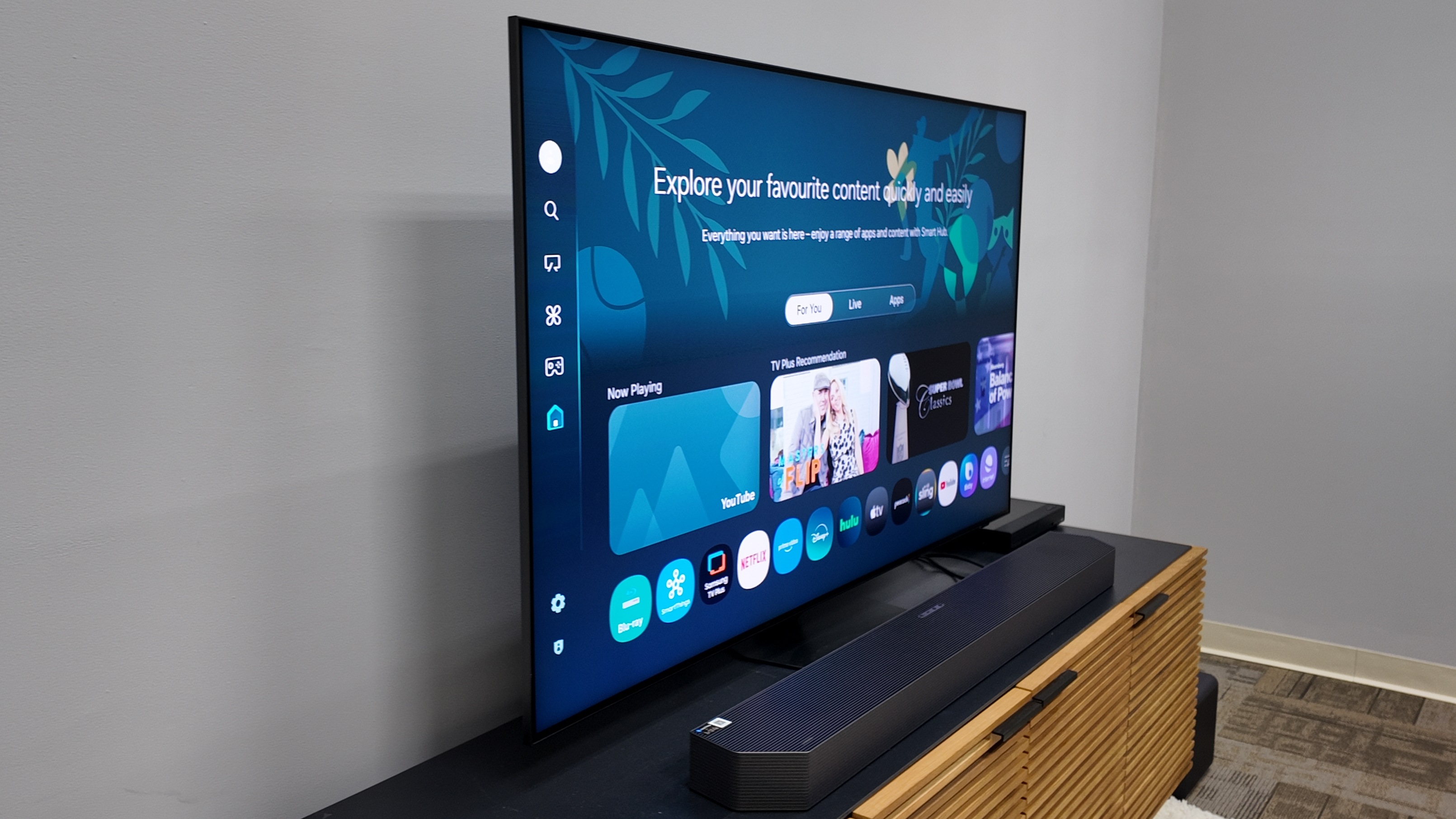
The QN90F strikes a similar pose as its predecessor, with a pedestal-style stand that sits below the center of the screen. It lifts the panel by over three inches, allowing enough clearance for most soundbars.
While not as wafer-thin as an OLED, the QN90F sports an impressively svelte display. Many TVs get wider around the midsection to accommodate internal hardware, but the QN90F features a uniform profile. A brushed texture along the back completes the posh look — even while turned off, this TV will likely make an impression.
The QN90F features Samsung’s glare-free finish, which might give some people pause if they have firm feelings on the matter. While I still need to see the QN90D in a wider range of viewing environments in order to cast judgment, I can say that I appreciate the feature more on the QN90F than I have on Samsung OLED TVs, probably on account of the QN90F’s higher overall brightness.
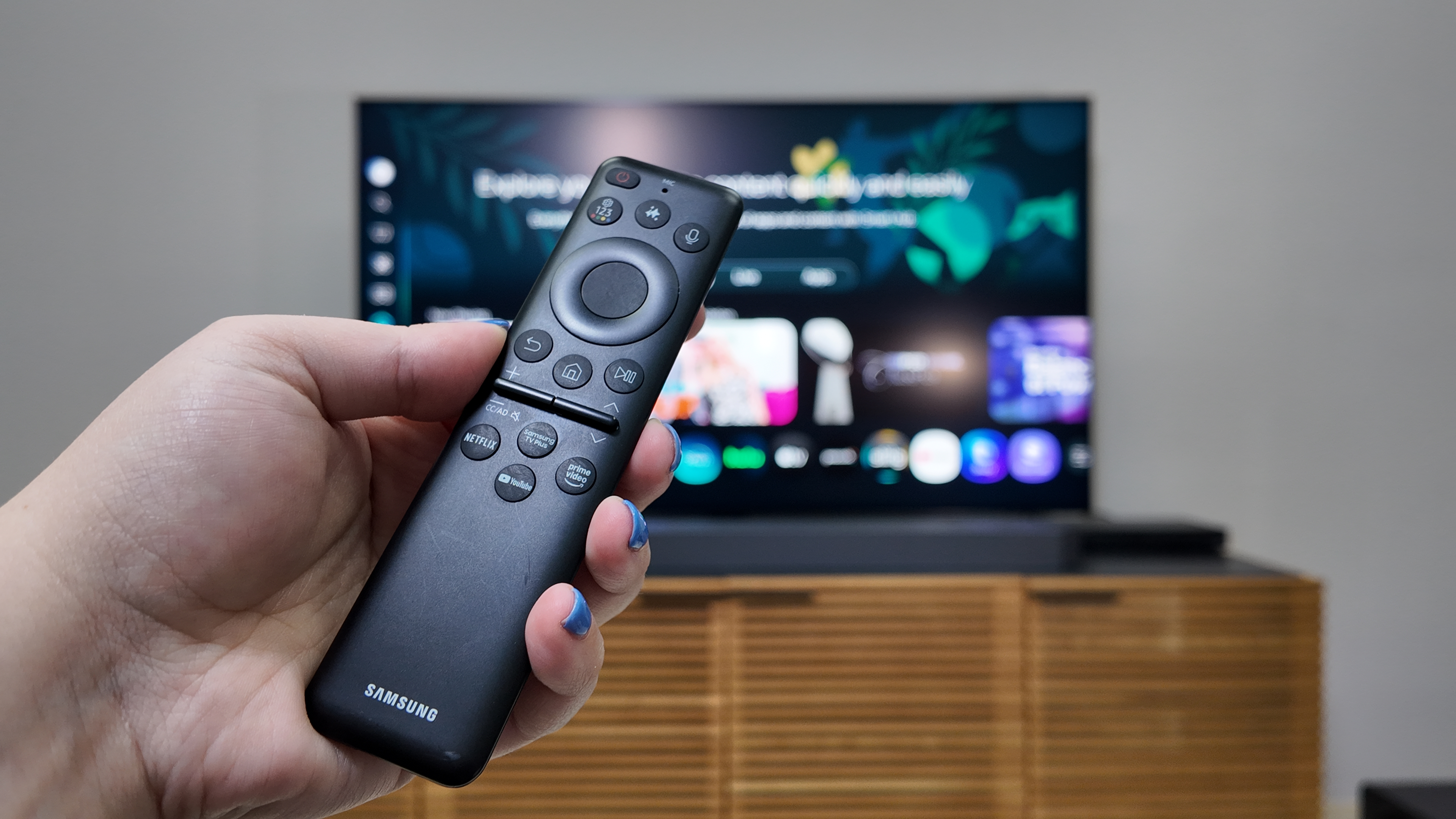
Samsung’s Solar Cell remote is along for the ride, and it remains one of my favorite aspects of the brand’s recent TV-related endeavors. This unique clicker features a built-in lithium-ion battery that charges by way of indoor and outdoor light, which eliminates the need for wasteful disposable batteries. In a pinch, the Solar Cell remote can charge via USB-C, too.
If you’re familiar with the design elements of Samsung’s Neo QLED series, there aren’t any surprises here. The QN90F’s physical appearance is the perfect table-setter for its sensational picture.
Samsung QN90F: Performance and features
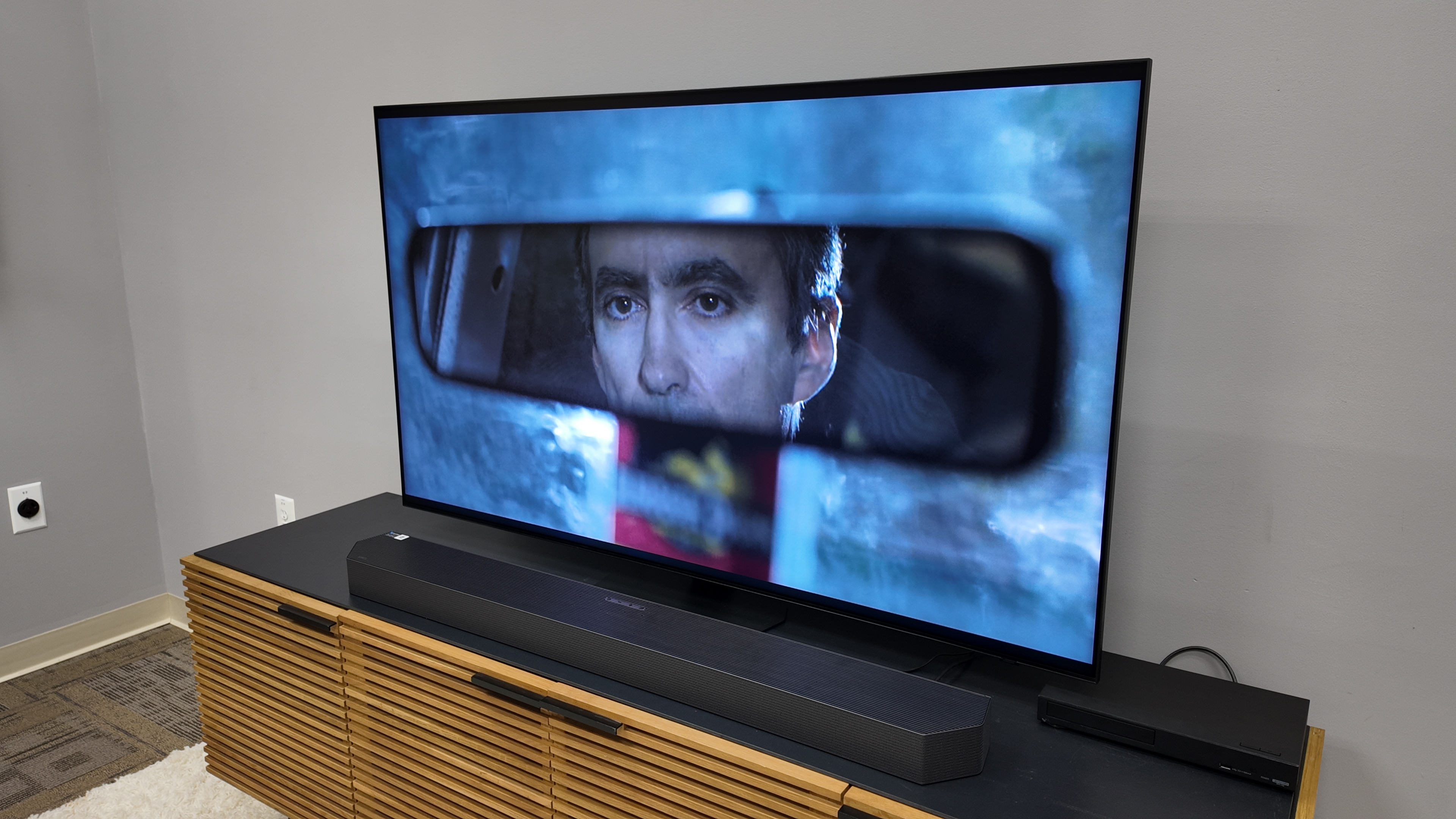
Being a Mini-LED TV bolstered by quantum dots, the QN90F specializes in a bright, bold picture. Unsurprisingly, its average picture brightness is much higher than what you’ll find on even the best OLED TVs, which ought to put the QN90F on the radar of anyone shopping for a sun-soaked living space.
Where the QN90F’s display really shines, however, is in its ability to drive a ton of brightness to small, intense pools of light, like dapples of sunlight on the ocean’s surface, or the glint of a jeweled ring. Known as specular highlights, these picture elements are an essential aspect of HDR performance. For truly impactful HDR, specular highlights need to be bright enough relative to the rest of the scene.
The QN90F aces this test, putting up around 2,100 nits of brightness in HDR FIlmmaker mode when measuring a 10% white window. For context, this is a hair above its predecessor, the Samsung QN90D, and not quite as bright as the 2,700 nits we measured on the Sony Bravia 9.
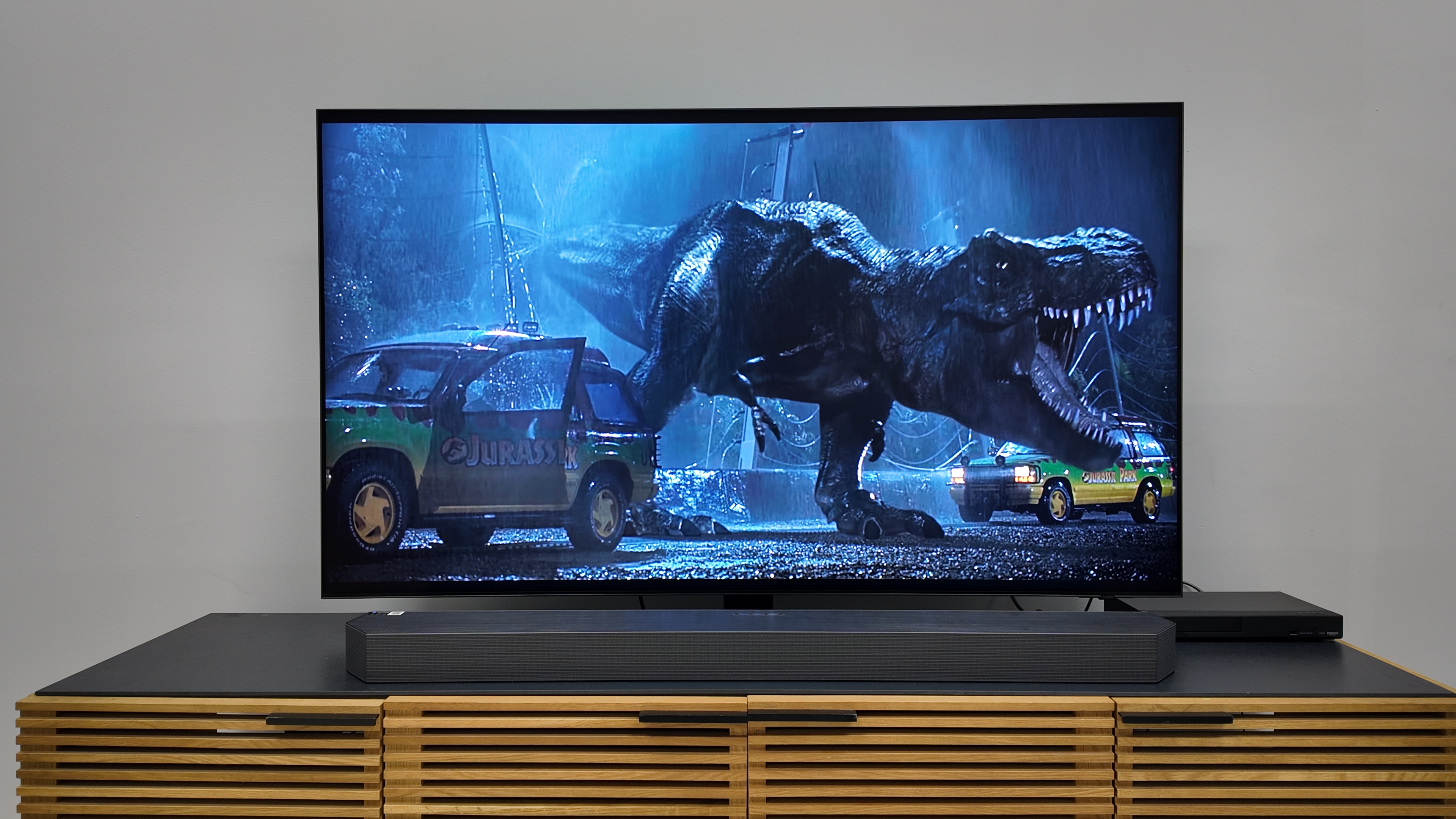
Its high-end performance is evident when you throw on some HDR content. I spent a good amount of time watching HDR movies on the QN90F, including “Conclave” and “Wicked.” In the former, I was regularly transfixed by the visual impact of lamps in the background of many dimly lit scenes. In “Wicked,” I could almost feel the heat of the flames during a sequence in which a wicker-made Elphaba is burned in effigy.
I’d put it right up there with the Bravia 9 as one of the best implementations of Mini-LED backlighting I’ve seen in recent years.
Most impressive is the QN90F’s local dimming performance, which seemingly improves with each passing year. In my limited initial time with the QN90F, I’d put it right up there with the Bravia 9 as one of the best implementations of Mini-LED backlighting I’ve seen in recent years.
As with all Mini-LED TVs, certain types of content can prove challenging, as haloing will inevitably reveal itself whenever bright objects punctuate dark scenes. You can expect to see this during opening title cards, or when subtitles appear during low-light sequences. This is par for the course when it comes to Mini-LEDs, however, and the QN90F handles these situations better than most TVs in its class.
One slightly disappointing aspect of the QN90F's performance is its color volume. According to our on-site testing, the QN90F covers about 93% of the DCI-P3 HDR color gamut and only about 72% of BT.2020. This is roughly what we measured on the QN90D last year, but it's still the lowest among the Bravia 9, the Hisense U8N and the LG C4 OLED.
Color certainly doesn't look bad on the QN90F, but the step up was noticeable when I moved on to Samsung's flagship QD-OLED, the S95F, in a different room. Such are the benefits of quantum dot-enhanced OLEDs.
I didn't have an opportunity to do any gaming on the QN90F, but it’s loaded up with the following features: four HDMI 2.1-compatible ports, Variable Refresh Rate (VRR) and AMD FreeSync Premium Pro, plus support for 4K gaming at 120Hz or 165Hz.
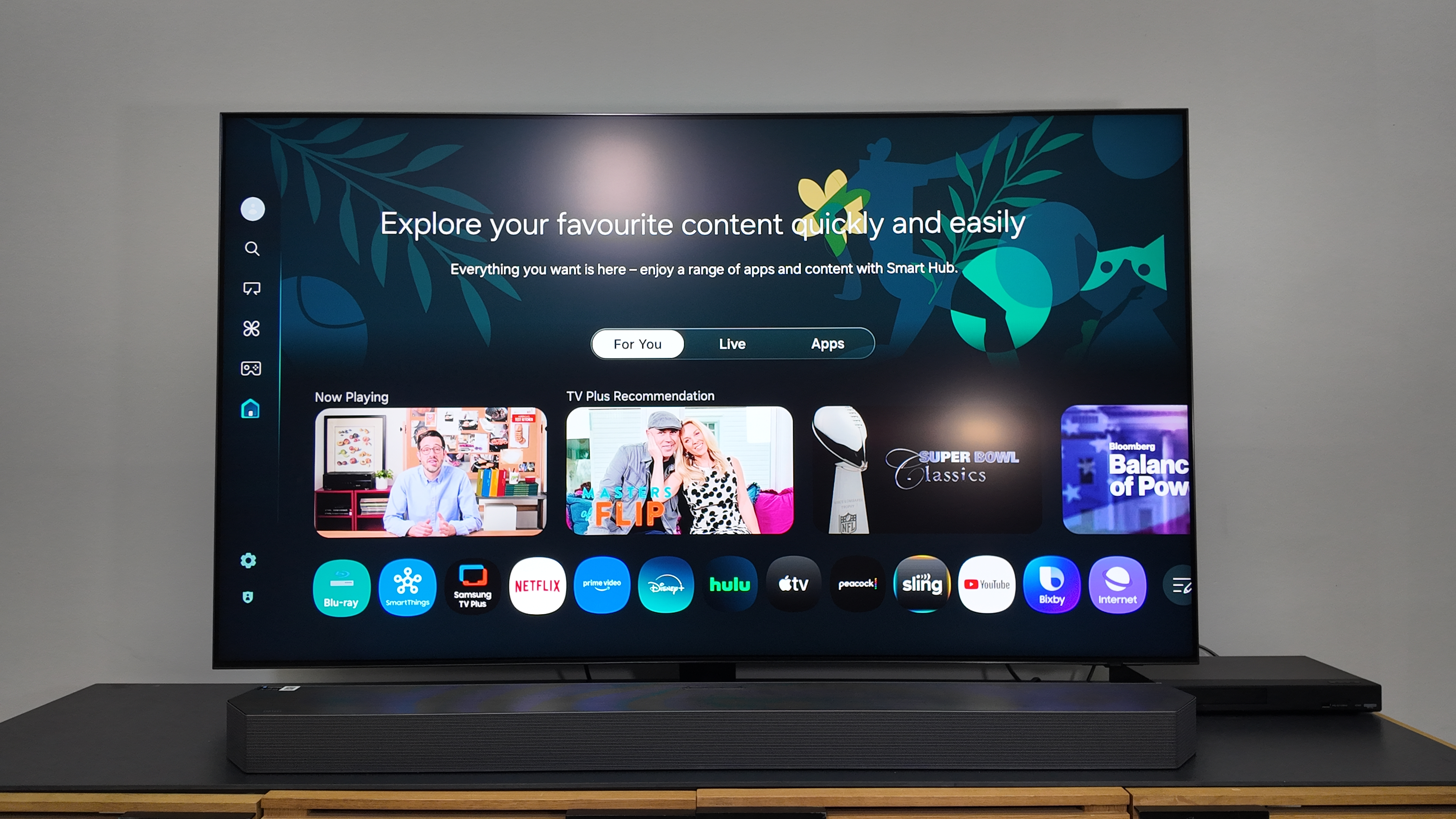
I’m not sold on Samsung Vision AI.
Samsung’s software has been refreshed this year, and for the most part, the changes are positive. The home screen hasn’t changed much (it’s still inundated with recommended content, unfortunately), but as someone who spends a ton of time in TV settings menus, I appreciate the new user interface. High-contrast icons make it easier to size up certain submenus, and shortcuts will quickly take you back to recently visited menu options.
One aspect of the software experience that I’m not sold on is Samsung Vision AI, a suite of AI-based features intended to enhance the viewing experience and to help people get the most out of their TV.
We were given a heads up that many of Vision AI’s advertised features hadn’t yet been implemented in the pre-release units we were evaluating, which is understandable. However, even if all of these features end up being exquisitely executed, I can’t see myself ever having a use for them.
The QN90F’s AI picture and audio enhancements did very little to improve the experience (though admittedly, I’m outside of the target demographic for this feature).
Additional AI-based features were far from engaging. For one thing, the dedicated AI button on the remote only worked with live sources on the QN90F, like the Samsung TV Plus app. It may be somewhat obvious at this point, but you can't use these features while watching a Blu-ray.
When available, the AI button serves up two on-screen options: a “what to watch next” page (which displays content a viewer might be interested in) and a “who’s on the screen” page (which offers information about the actors on screen).
Unfortunately, the former seems limited in its reach, and the latter simply puts up a Wikipedia article about the actor in question.
The QN90F’s yet-to-be-implemented AI features include an option that recommends recipes based on the food on screen and a service that "listens" for unusual sounds in your home, marketed mainly as a pet safety feature. I'm sorry to say that neither of these intrigues me.
Samsung QN90F: Outlook
Having seen every iteration of the QN90 Neo QLED series dating back several years, I'm excited to report that the QN90F is shaping up to be one of the year's best LED TVs — and perhaps one of the best TVs, period.
While there's still plenty of testing to do before we publish our final take, the QN90F has already demonstrated that Samsung's Mini-LED engineering is still among the best in the game. The QN90F's list of gaming features are among the most thorough you'll find on the market.
And, while the user interface is still somewhat cumbersome to use, the minor tweaks that have been made are for the better.
I'm less impressed with the QN90F's half-baked AI features, which have been at the forefront of everything from press releases to Samsung's CES showcase. They don't excite me in any way, and I imagine that they'll fall flat for most folks, too, even once they're fully implemented.
All that said, viewers on the hunt for the most colorful picture money can buy might find themselves exploring alternatives: The QN90F is no slouch in this department, but Mini-LED competitors might once again outpace Samsung's flagship Neo QLED (to say nothing of soon-to-be-released Samsung QD-OLED TVs, which also have a track record of delivering dazzling color).
Again, we'll know more about how the QN90F performs in a more real-world setting once we get it into our lab and living rooms for testing sometime in the next few months. Until then, we'll be keeping our eyes on this cutting-edge Mini-LED.
More From Tom's Guide

Michael Desjardin is a Senior Editor for TVs at Tom's Guide. He's been testing and tinkering with TVs professionally for over a decade, previously for Reviewed and USA Today. Michael graduated from Emerson College where he studied media production and screenwriting. He loves cooking, zoning out to ambient music, and getting way too invested in the Red Sox. He considers himself living proof that TV doesn't necessarily rot your brain.
You must confirm your public display name before commenting
Please logout and then login again, you will then be prompted to enter your display name.
